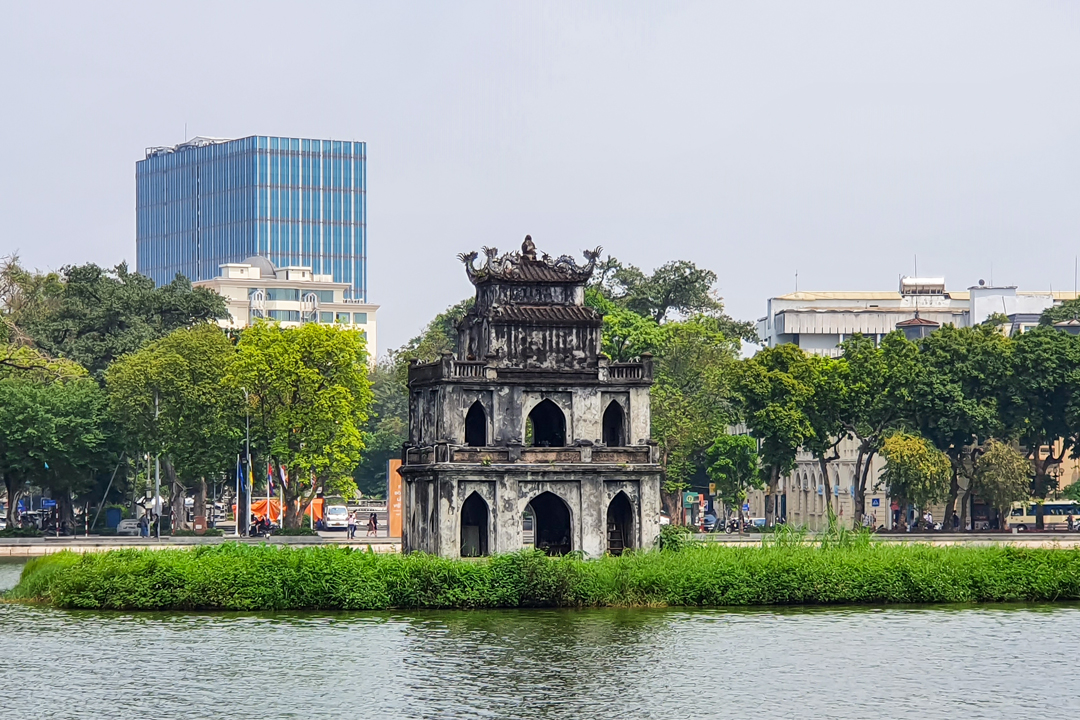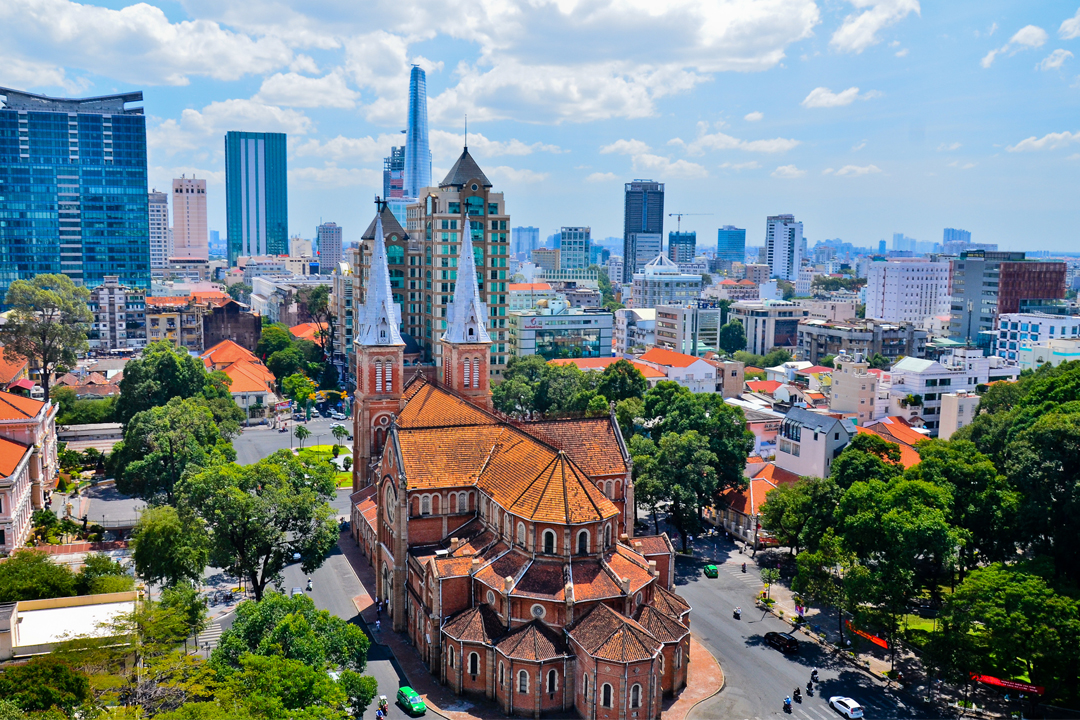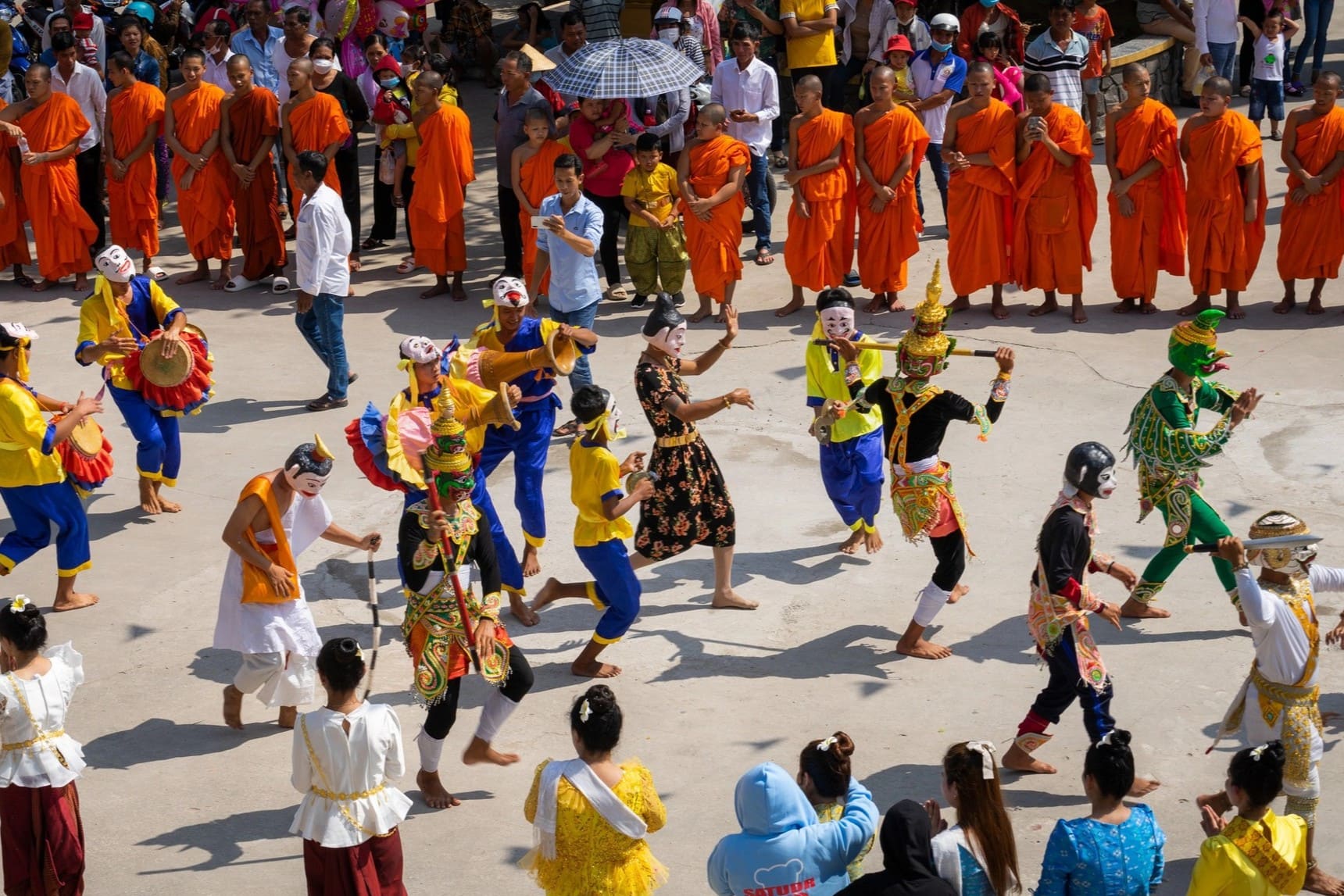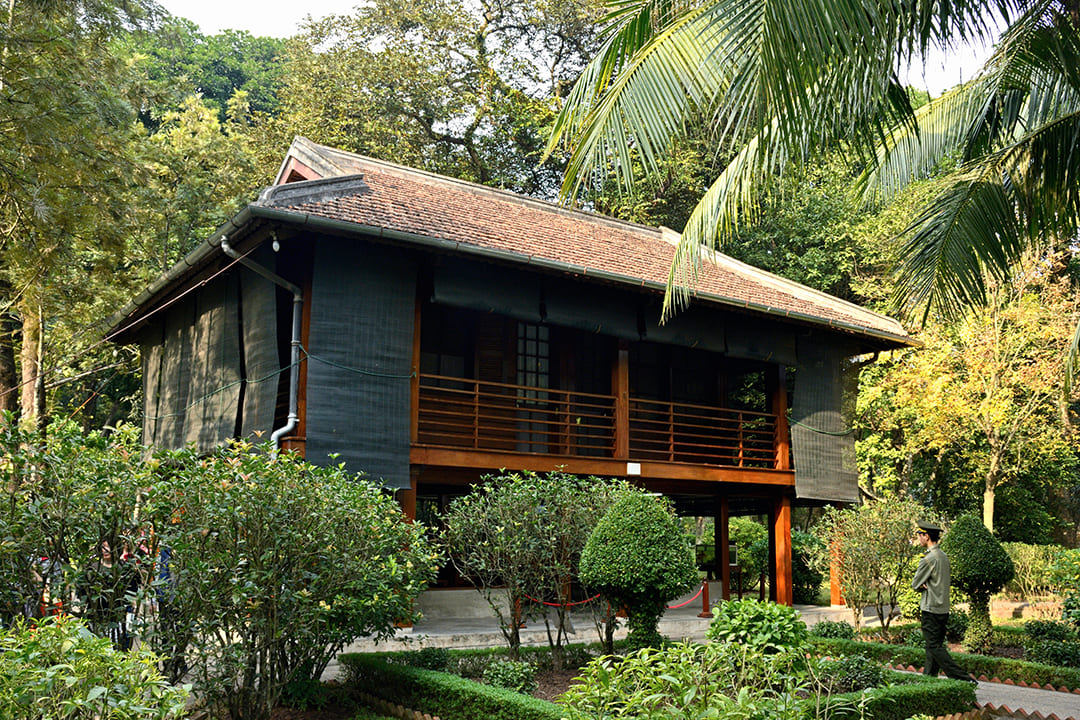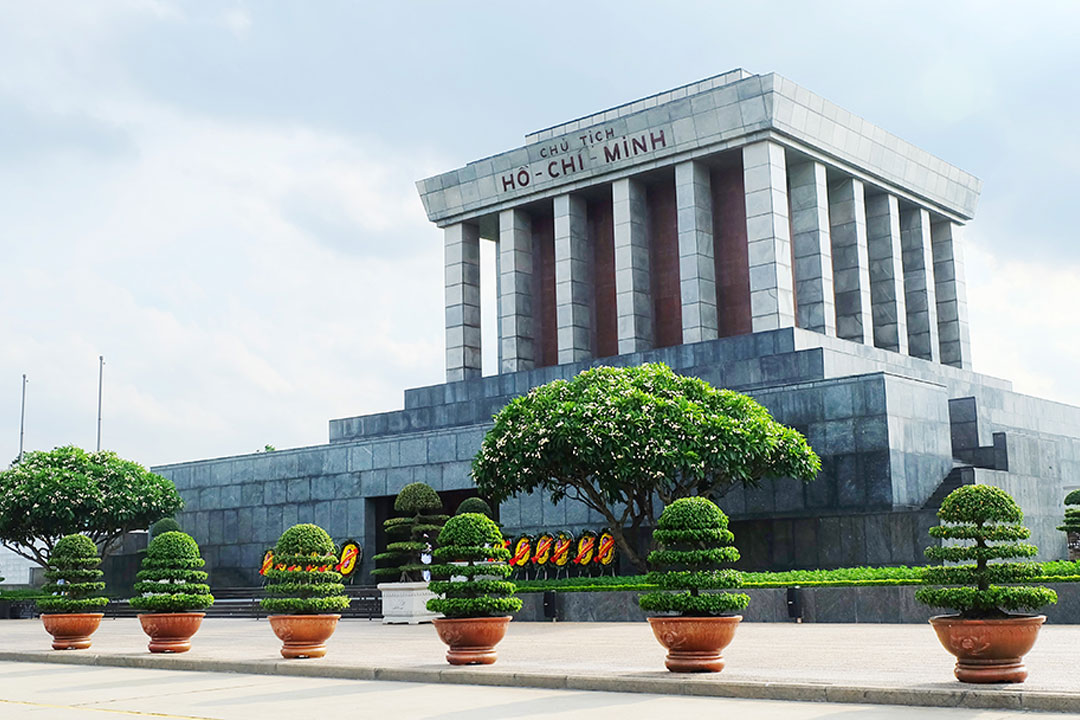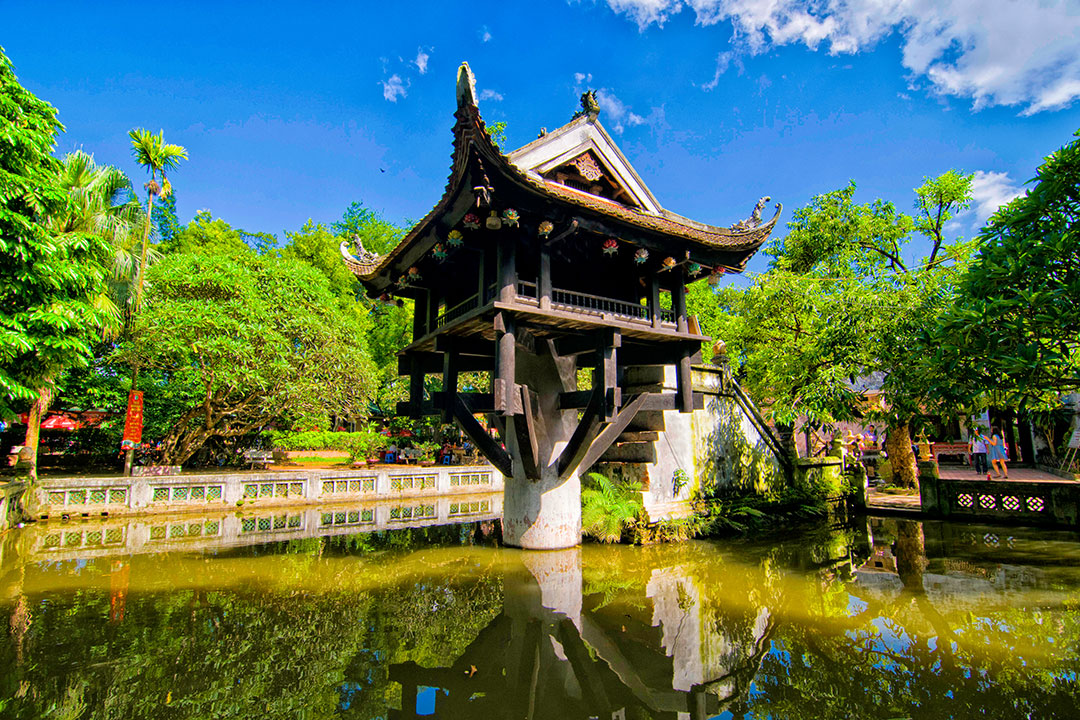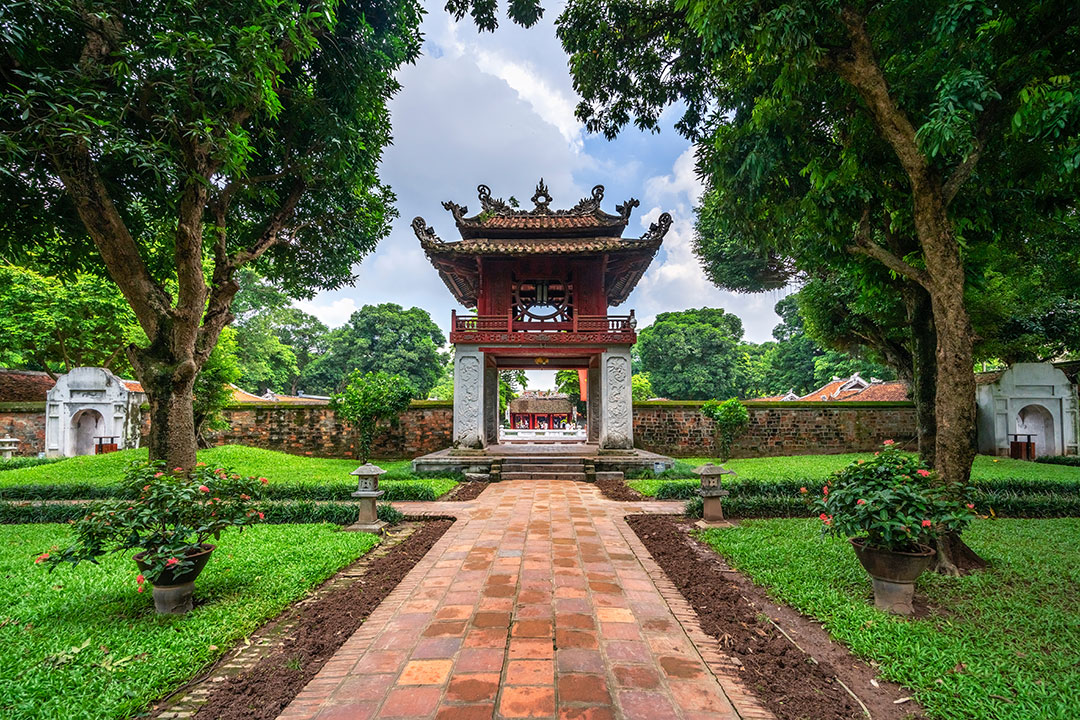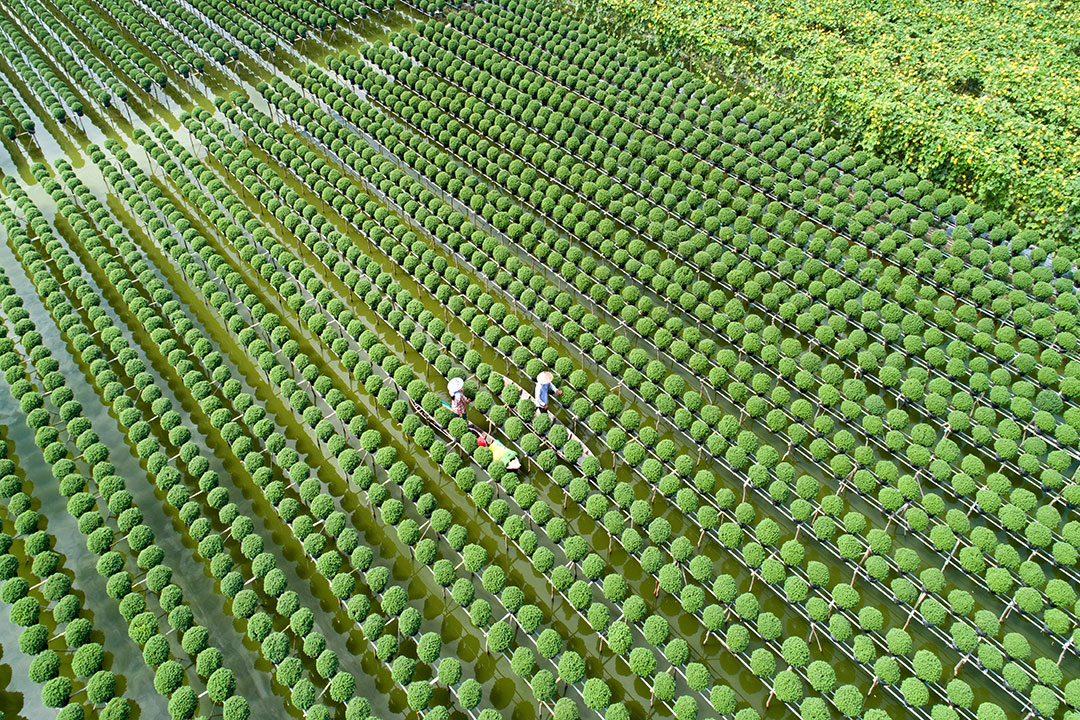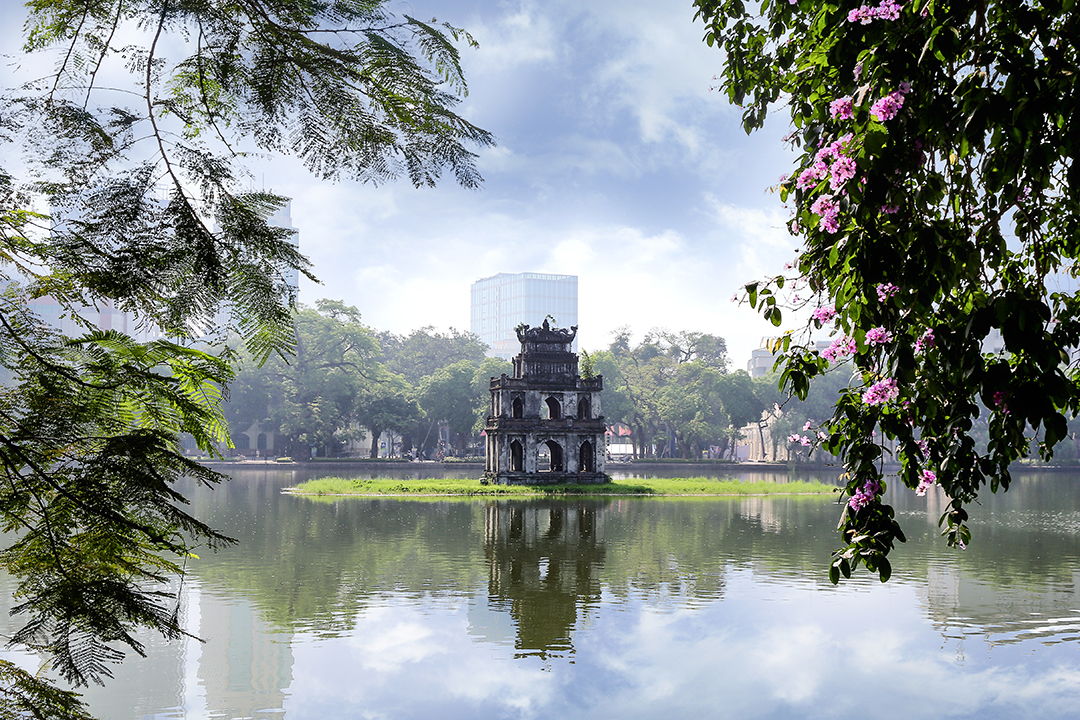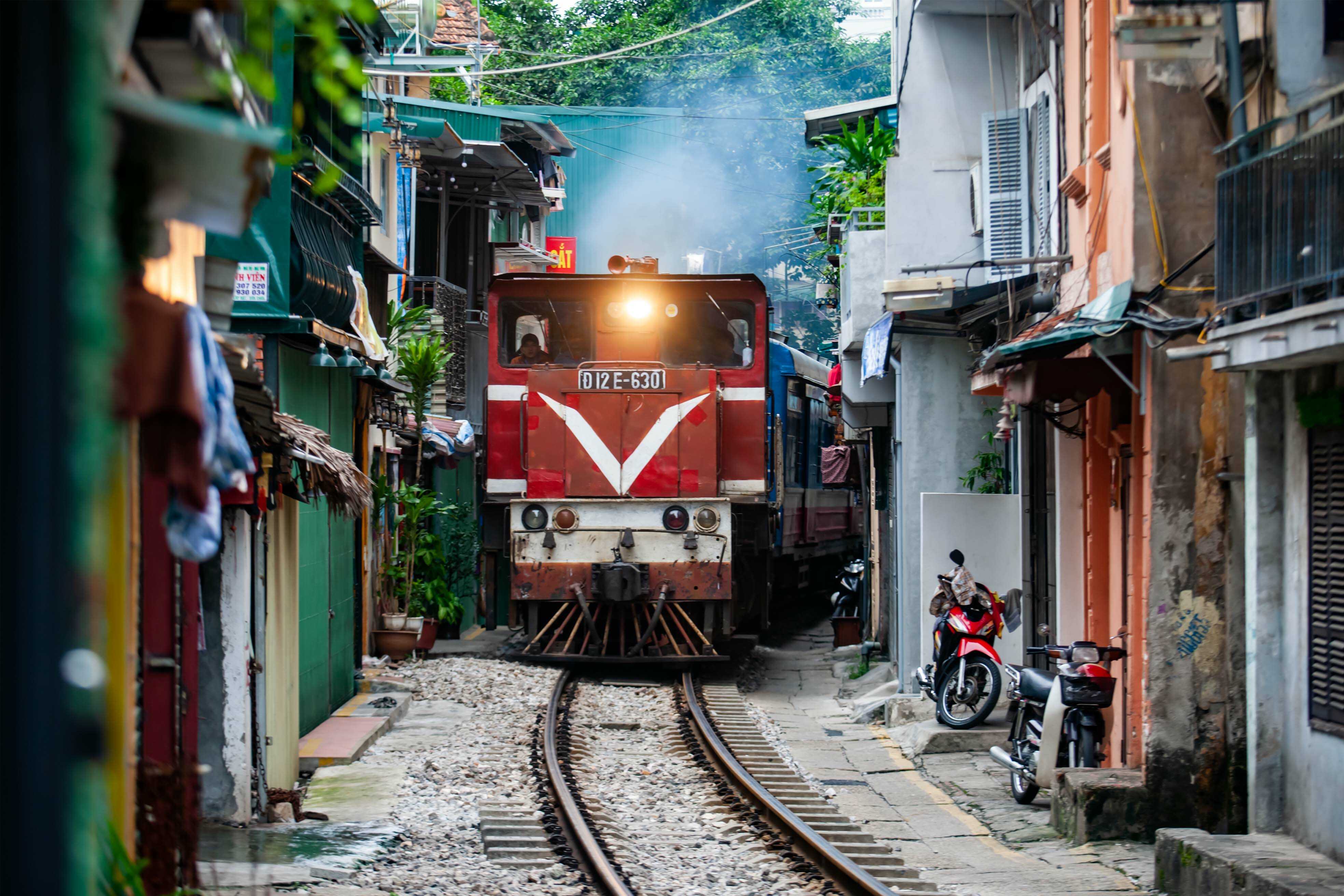Ho Chi Minh's Stilt House: History, Architecture, Things To Do & Travel Guide
Tucked away in the leafy grounds of Hanoi’s Presidential Palace, Ho Chi Minh’s Stilt House is more than just a relic of the past. It’s a quiet testament to the simplicity and integrity of Vietnam’s most iconic leader. Built in 1958 at President Ho Chi Minh’s request, this humble wooden house on stilts reflects his deep connection to the people and his rejection of luxury. Every detail of the house, from its rustic materials to its open, airy design, mirrors the lifestyle and values that guided his leadership.
Today, the stilt house draws travelers, historians, and the curious alike. It stands not only as a preserved residence but also as a powerful symbol of a man whose strength lay in humility. In this guide of GTrip, you’ll uncover the history, architectural meaning, and practical travel tips to help you fully appreciate one of Hanoi’s most meaningful landmarks.
The history of Ho Chi Minh's Stilt House
Ho Chi Minh's Stilt House stands as a powerful testament to the revolutionary leader's humble character and deep connection to the Vietnamese people. This modest wooden structure, located near the imposing Ho Chi Minh Mausoleum, has a rich historical significance that transcends its simple architecture.
After Hanoi's liberation from French colonial rule in October 1954, President Ho Chi Minh returned from the Viet Bac resistance base to lead the newly independent northern Vietnam. Though the Presidential Palace was designated as his official residence, the opulent colonial building conflicted with his lifelong commitment to simplicity. Initially, Ho Chi Minh reluctantly resided in a small electrician's house on the palace grounds, using the main palace only for official government functions and diplomatic receptions.
In March 1958, during a visit to the ethnic minority communities in Dai Tu District of Thai Nguyen Province, Ho Chi Minh was inspired by the traditional stilt houses of Vietnam's northern highlands. He expressed his wish for a similar dwelling that would reflect the traditional architecture of the Viet Bac region. He envisioned a modest home that embodied his personal philosophy of frugality and connection to ordinary Vietnamese citizens.
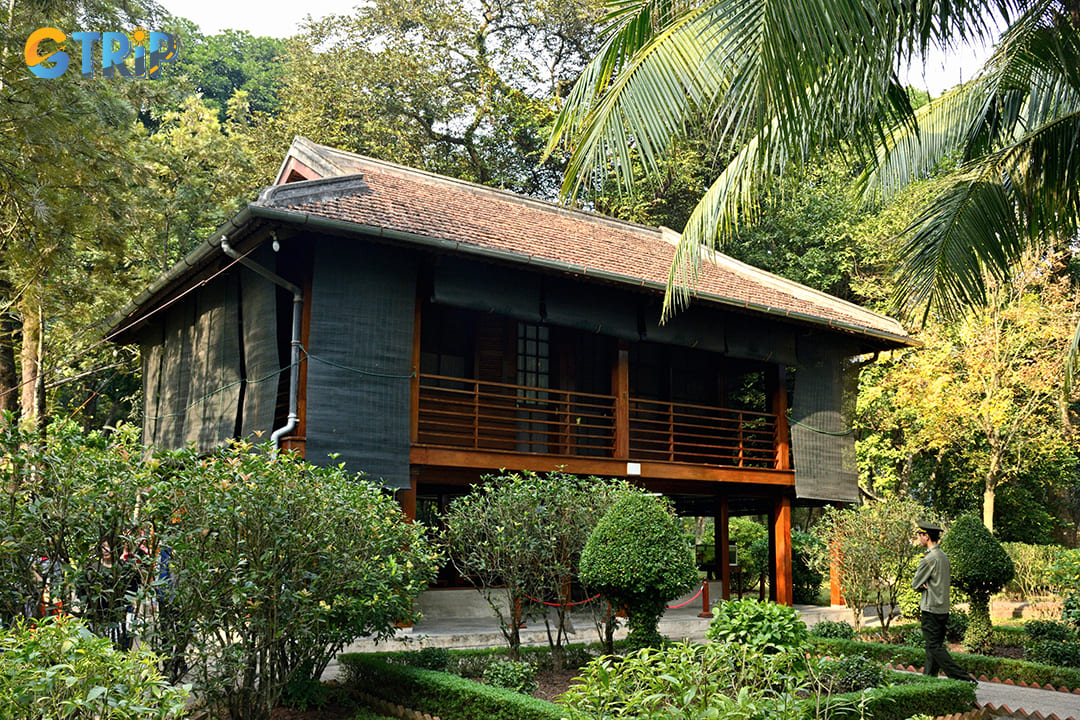
Ho Chi Minh's Stilt House stands as a powerful testament to the revolutionary leader's humble character and deep connection to the Vietnamese people
The task of designing this special residence fell to architect Nguyen Van Ninh. He created plans for a two-story wooden stilt house that would harmonize with the surrounding landscape while meeting the basic needs of the nation's leader. Construction began promptly on April 15, 1958, led by Nguyen Kim Toan and a dedicated team of 30 workers from the General Department of Logistics' Team 5.
The stilt house was completed in just over a month, on May 17, 1958, and presented to President Ho Chi Minh as a birthday gift. He moved in two days later, on May 19, 1958, and would call this simple structure home for the remaining eleven years of his life until his death on September 2, 1969. Despite its modest appearance, the house became the center of Vietnam's leadership during a critical period in the nation's history.
During his residence, the stilt house served as both Ho Chi Minh's private quarters and his working space. There, he received distinguished guests, conducted important state affairs, and held key Politburo meetings that influenced Vietnam's path toward reunification. After his passing, the Vietnamese government preserved the house exactly as he left it, maintaining every detail with care. It was transformed into a historical monument that offers deep insight into Ho Chi Minh’s extraordinary life and humble character, drawing people from across Vietnam and around the world.

The stilt house served as both Ho Chi Minh's private quarters and his working space
Architecture of Ho Chi Minh's stilt house
Ho Chi Minh's Stilt House represents a masterpiece of traditional Vietnamese design blended with practical functionality. The modest wooden structure stands as a powerful symbol of Uncle Ho's humble lifestyle and deep bond with the common people of Vietnam. Its simplicity deliberately contrasts with the ornate French colonial Presidential Palace nearby, which he chose not to occupy.
The stilt house draws direct inspiration from the traditional homes of Vietnam's Tay and Thai ethnic minorities from the northern highlands. Built in 1958, this two-story structure elegantly rises on sturdy wooden pillars approximately 1.2 meters above ground level. This is a practical design that provides natural protection against flooding, wild animals, and humidity while ensuring optimal airflow throughout the living quarters. The elevated design creates a natural cooling system, particularly valuable during Hanoi's sweltering summer months, where temperatures can exceed 40°C.
The house's dimensions reflect Ho Chi Minh's preference for simplicity, a modest 10.5 meters in length and 6.2 meters in width. The primary building materials include ironwood for the support pillars and high-quality timber for walls and floors, materials chosen for their durability and cultural significance. Large windows with minimal ornamentation allow abundant natural light to filter through the space while facilitating cross-ventilation.
The functional layout of the house consists of two distinct levels:
- Upper floor: Contains Ho Chi Minh's personal living quarters. It includes a small bedroom with a simple wooden bed, a modest office workspace with a humble desk, and bookshelves filled with his extensive reading collection
- Lower floor: Served as a meeting area for receiving visitors and government officials, featuring basic furniture arranged around a central gathering space
- Connecting elements: A simple wooden staircase links the two levels, while a small balcony upstairs overlooks the gardens
The interior furnishings reveal Uncle Ho's famously frugal lifestyle, featuring:
- A narrow single bed with a firm mattress
- A basic wooden desk and chair where he worked daily
- Several modest bookshelves containing political, historical, and literary works
- A few personal items, including a clock, radio, and simple clothing
- Traditional Vietnamese handicrafts as subtle decorative elements
The house's surroundings amplify its architectural harmony, with lush gardens featuring native plants, a peaceful fishpond, and fruit trees. This integration with nature wasn't merely aesthetic, it reflected Ho Chi Minh's personal philosophy that emphasized living harmoniously with the natural world, sustainability, and self-sufficiency.

Upper floor of the stilt house contains Ho Chi Minh's personal living quarters
Things to do when visiting Ho Chi Minh's stilt house
Ho Chi Minh's Stilt House offers you a unique glimpse into the modest lifestyle of Vietnam's most revered leader. This historic site provides several enriching experiences that blend architectural appreciation, historical insight, and natural tranquility.
Explore the architecture of the wooden house
The stilt house's distinctive architectural features provide fascinating insights into traditional Vietnamese design principles and Ho Chi Minh's personal philosophy of simplicity. As you explore the wooden structure, you'll notice the elegant yet modest craftsmanship that reflects both functionality and cultural significance.
The house stands on wooden stilts approximately 1.2 meters above ground, featuring traditional elements adapted from ethnic minority communities in Vietnam's northern highlands. While walking through, observe the following unique architectural aspects:
- Two-room design: A simple working area and modest bedroom connected by a wooden corridor
- Natural ventilation system: Strategically placed windows and doorways that allow air circulation
- Indigenous hardwood construction: Built primarily from jackfruit wood known for its durability
- Traditional roof structure: Featuring sloped design to accommodate Vietnam's tropical climate
- Minimal ornamentation: Reflecting Uncle Ho's preference for simplicity and practicality
The house's raised design serves both practical and symbolic purposes, providing protection from humidity while representing the elevated thinking of the revolutionary leader who lived there.
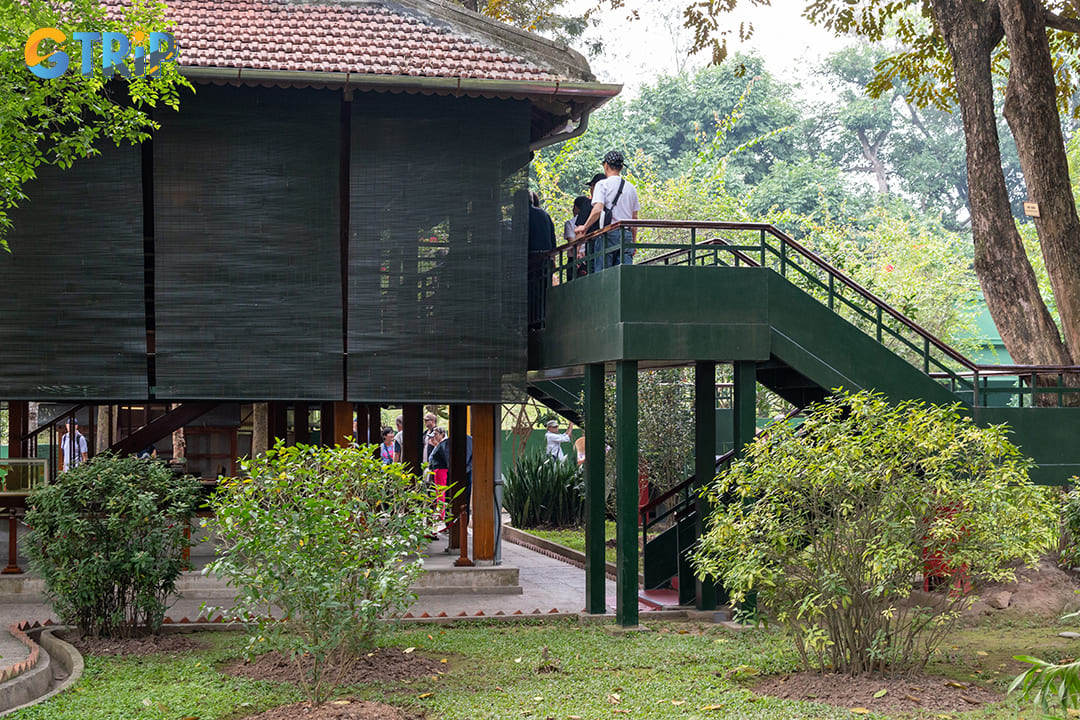
As you explore the wooden structure, you'll notice the elegant yet modest craftsmanship that reflects both functionality and cultural significance
Learn about Ho Chi Minh's life through a tour
Guided tours of the stilt house offer comprehensive insights into Ho Chi Minh's daily routines, revolutionary activities, and personal philosophy. Knowledgeable guides share captivating stories about how Uncle Ho lived and worked in this modest dwelling from 1958 until his passing in 1969.
The tour typically includes detailed explanations of the personal artifacts that remain in the house, preserved exactly as they were during Ho Chi Minh's lifetime:
| Area | Items of interest | Historical significance |
|---|---|---|
| Study | Simple desk, bookshelf with political texts | Where Ho Chi Minh drafted important documents |
| Bedroom | Narrow bed, mosquito net, electric fan | Demonstrates his modest lifestyle despite his position |
| Reception area | Wooden chairs, meeting table | Where he received international dignitaries and fellow revolutionaries |
| Personal items | Reading glasses, sandals made from rubber tires | Illustrates his frugality and practicality |
These tours typically last 30-45 minutes and are available in multiple languages. It offers fascinating contextual information that brings the historic site to life and provides a deeper understanding of Vietnam's revolutionary period.

Guided tours of the stilt house offer comprehensive insights into Ho Chi Minh's daily routines, revolutionary activities, and personal philosophy
Stroll around the peaceful garden and fruit trees
The meticulously maintained gardens surrounding the stilt house offer you a serene space for contemplation while showcasing plants that Ho Chi Minh personally selected and tended. This tranquil setting reflects the leader's deep connection to nature and his moments of peaceful reflection amid revolutionary activities.
Walking through the garden, you'll encounter:
- Native fruit trees: Including mango, starfruit, and longan trees that still bear fruit seasonally
- Ornamental plants: Various flowering species that bloom throughout the year
- Medicinal herbs: Traditional plants used in Vietnamese folk medicine
- Stone pathways: Winding through the garden, allowing for meditative walks
- Seating areas: Simple benches placed strategically for rest and contemplation
The garden's layout remains largely unchanged since Ho Chi Minh's time, with historical photographs showing him working among these same trees and plants. The best times to visit are early morning or late afternoon when the lighting creates a golden glow across the foliage and temperatures are most comfortable for exploring the grounds.
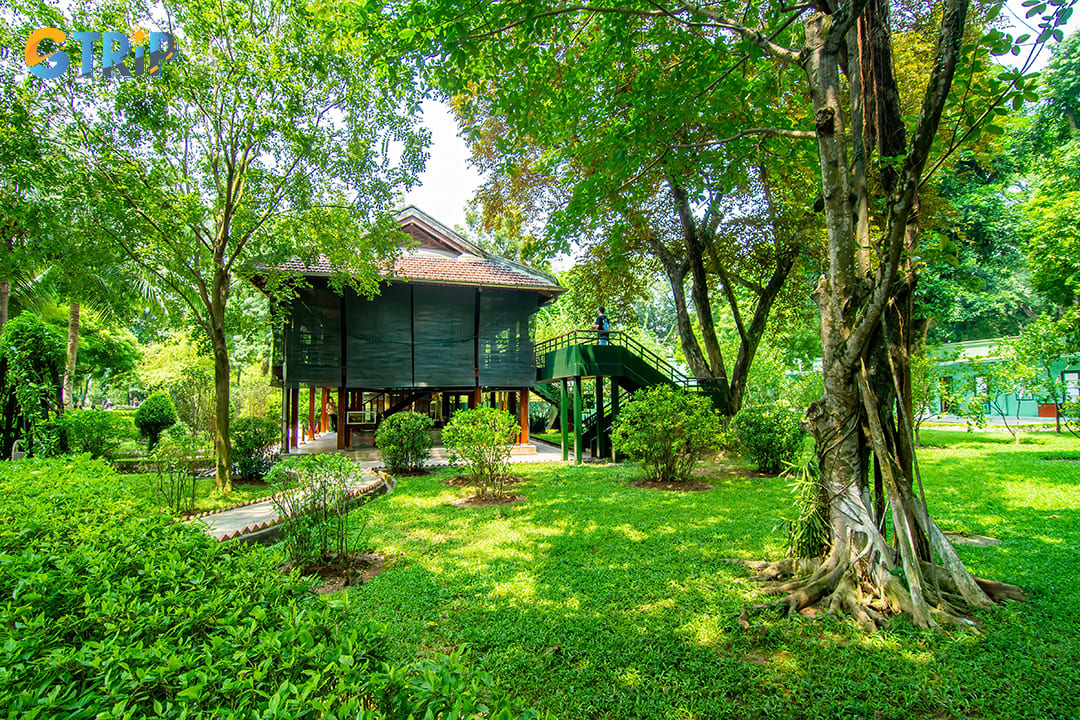
The meticulously maintained gardens surrounding the stilt house offer you a serene space for contemplation
Visit Uncle Ho's fish pond
The small fish pond situated near the stilt house represents another fascinating aspect of Ho Chi Minh's daily life and his connection to Vietnamese rural traditions. This peaceful water feature served both practical and recreational purposes during his residence.
The fish pond remains active today, stocked with various species that Uncle Ho himself kept. Historical accounts mention that Ho Chi Minh would often spend quiet moments by this pond, feeding the fish early in the morning or relaxing after intensive work periods. The pond also served practical purposes within his self-sufficient lifestyle, providing both food and a water source for the garden.

The small fish pond situated near the stilt house represents another fascinating aspect of Ho Chi Minh's daily life
Opening hours and ticket prices of Ho Chi Minh's stilt house
Planning your visit to Ho Chi Minh's Stilt House requires understanding its operational schedule and budget considerations. This historical site maintains specific visiting hours and an accessible pricing structure to accommodate both local and international visitors while ensuring proper preservation of this significant landmark.
Visiting schedule
Ho Chi Minh’s Stilt House is open to the public five days a week, closed on Mondays and Fridays for maintenance. It welcomes tourists on weekends, ideal for those traveling on Saturdays or Sundays.
Opening hours are split into two sessions: mornings from 7:30 AM to 11:00 AM, and afternoons from 1:00 PM to 4:00 PM (occasionally starting at 1:30 PM). The site closes midday for lunch and cleaning. Last entry is typically 30 minutes before closing, so it’s best to arrive at least one hour before the session ends.
Admission fees
The stilt house maintains a visitor-friendly pricing structure that reflects its status as a national heritage site:
| Visitor category | Ticket price | Notes |
|---|---|---|
| Vietnamese nationals | Free entry | ID or passport required for verification |
| Foreign visitors | 25,000 VND | Approximately 1 USD |
| Children (under 6) | Free entry | For all nationalities |
| Educational groups | Discounted rates | Pre-booking required |
Payment can be made in Vietnamese Dong only, so you should prepare small denominations in advance. The modest entrance fee for international travelers helps support the preservation efforts while keeping the site accessible to most budget levels.
How to get to Ho Chi Minh's Stilt House
Reaching Ho Chi Minh's Stilt House is straightforward as it's located within the Presidential Palace Complex in the Ba Dinh District of Hanoi. Tourists have multiple transportation options depending on their preferences, budget, and starting location. Here's a comprehensive guide on how to reach this historical landmark through various modes of transportation.
By bus
Hanoi's public bus system offers an economical way to reach Ho Chi Minh's Stilt House. Several routes stop near the Ba Dinh Square and the Presidential Palace Complex:
- Bus No. 09: Runs between Long Bien and Bo Ho, stopping at Hung Vuong Street
- Bus No. 22: Connects Gia Lam Bus Station to Kim Ma Bus Station
- Bus No. 45: Goes from Long Bien to Nguyen Trai Street with a stop near Ba Dinh Square
The closest bus stop is typically on Hung Vuong Street, approximately 400 meters from the entrance. Buses in Hanoi are inexpensive, with fares ranging from 7,000 - 10,000 VND (0.30 - 0.45 USD) per journey. For the most current routes and schedules, check the Hanoi Public Transport app or website before your trip.
By taxi or ride-hailing service
Taxis and ride-hailing services provide the most convenient door-to-door option for reaching Ho Chi Minh's Stilt House:
- Traditional taxis: Mai Linh, Vinasun, and G7 are reliable companies with metered fares
- Ride-hailing apps: Grab, Be, and Xanh SM offer car and motorbike taxi services with upfront pricing
From Hanoi Old Quarter, expect to pay 60,000 - 100,000 VND (2.60 - 4.30 USD) depending on traffic conditions. When using taxis, ask drivers to take you to "Nha San Bac Ho" or show them the location on your map application to avoid confusion.

Taxis and ride-hailing services provide the most convenient door-to-door option for reaching Ho Chi Minh's Stilt House
By motorbike or bicycle rental
Exploring Hanoi by motorbike or bicycle offers flexibility and the authentic local experience many travelers seek. If you're comfortable navigating Hanoi's bustling streets, this can be an enjoyable way to reach the Stilt House:
- Motorbike rentals: Available from 100,000 - 150,000 VND (4.30 - 6.50 USD) per day
- Bicycle rentals: Cost approximately 30,000 - 50,000 VND (1.30 - 2.15 USD) per day
Parking fees typically range from 5,000 - 10,000 VND (0.22 - 0.43 USD) for motorbikes. Remember to bring your international driving permit if you plan to rent a motorbike.
By cyclo
For a nostalgic journey through Hanoi, consider hiring a cyclo (three-wheeled bicycle taxi). These traditional vehicles offer a unique perspective of the city:
- Cyclos can be found throughout Hanoi's tourist areas, particularly in the Old Quarter
- Negotiate the fare before starting your journey, expect to pay 150,000 - 250,000 VND (6.50 - 10.80 USD) for a one-hour tour including the Ba Dinh Square area
- Most cyclo drivers can act as informal guides, offering insights about the landmarks along the way
While not the fastest option, a cyclo ride provides excellent photo opportunities and a leisurely pace to absorb Hanoi's atmosphere before arriving at the Stilt House.
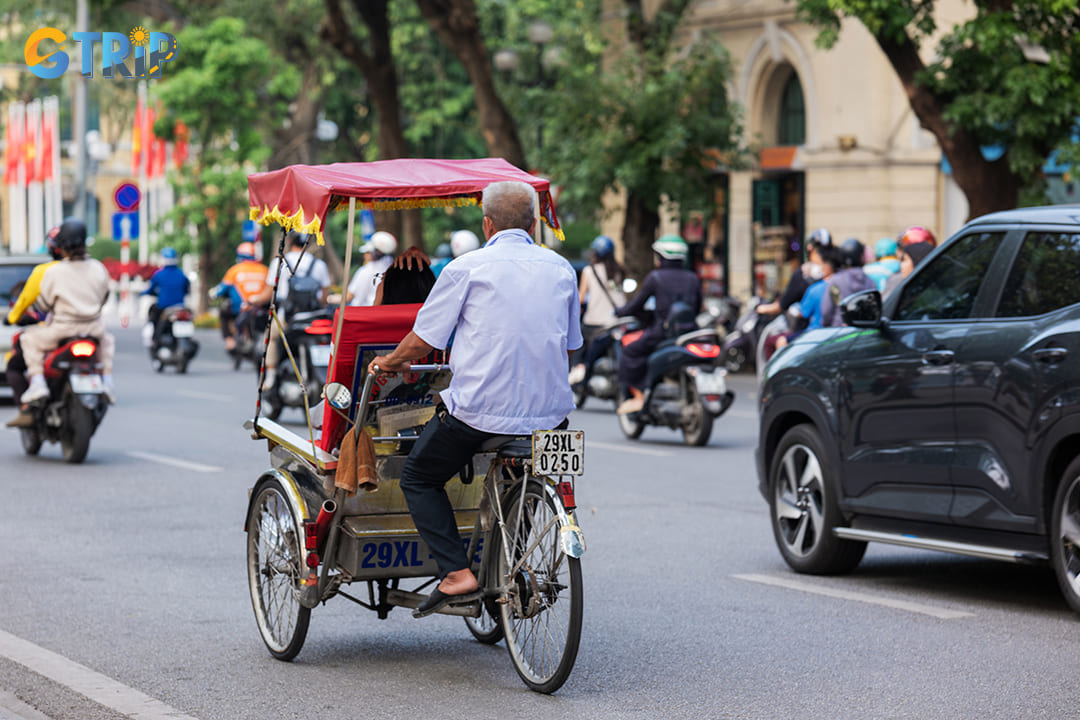
For a nostalgic journey through Hanoi, consider hiring a cyclo
By walking
Walking to Ho Chi Minh's Stilt House is ideal if you're already visiting nearby attractions within the Ba Dinh Square complex:
- From Ho Chi Minh Mausoleum: The Stilt House is approximately a 5 - 7 minute walk (400 meters) through the Presidential Palace gardens
- From One Pillar Pagoda: A short 3-minute walk (250 meters) north along the paved pathway
Walking allows you to fully appreciate the meticulously maintained gardens and architecture of the Presidential Palace Complex. Follow the clearly marked signs in multiple languages that direct visitors to major attractions within the complex.
Important notes when visiting Ho Chi Minh's Stilt House
To fully appreciate this historic site, you should follow basic etiquette and preparation guidelines:
- Dress modestly: Cover shoulders and knees out of respect.
- Photography: Allowed outside, but strictly prohibited inside the house.
- Be quiet: Maintain a respectful silence throughout the site.
- Do not touch artifacts: All items inside are original and must be preserved.
- Consider a guided tour: Guides offer deeper historical context and insight.
- Visit early: Arriving before 9:00 AM helps avoid crowds.
- Stay on marked paths: Follow the one-way route to protect the grounds and ensure smooth flow.
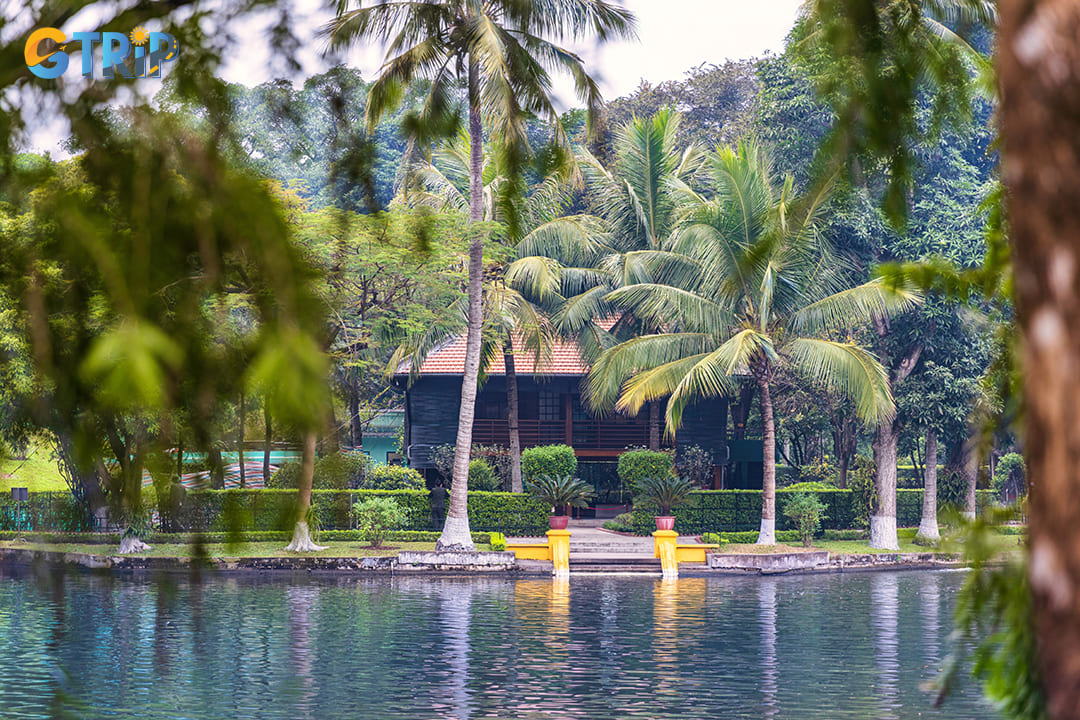
To fully appreciate this historic site, you should follow basic etiquette and preparation guidelines
Nearby attractions from Ho Chi Minh's stilt house
The area surrounding Ho Chi Minh's Stilt House is rich with historical landmarks and cultural attractions, making it a prime district for exploration in Hanoi. The complex of attractions in this area offers a comprehensive insight into Vietnam's revolutionary history, political development, and cultural heritage.
Presidential Palace
The majestic Presidential Palace stands as a striking example of French colonial architecture just steps away from Ho Chi Minh's modest stilt house. Built between 1900 and 1906 as the residence of the French Governor-General of Indochina, this yellow three-story mansion presents a stark contrast to Uncle Ho's simple dwelling.
While the interior of the Presidential Palace remains closed to tourists (it's used for official government functions), you can admire its impressive exterior and explore the meticulously maintained gardens. The architectural elements blend French and Italian Renaissance styles with distinctive yellow walls that create a striking visual against Hanoi's skyline.
The palace grounds feature:
- Elegant gardens with tropical plants and fruit trees
- Historical plaques explaining the building's significance
- The garage housing Ho Chi Minh's collection of cars
- Ceremonial guards at the main entrance
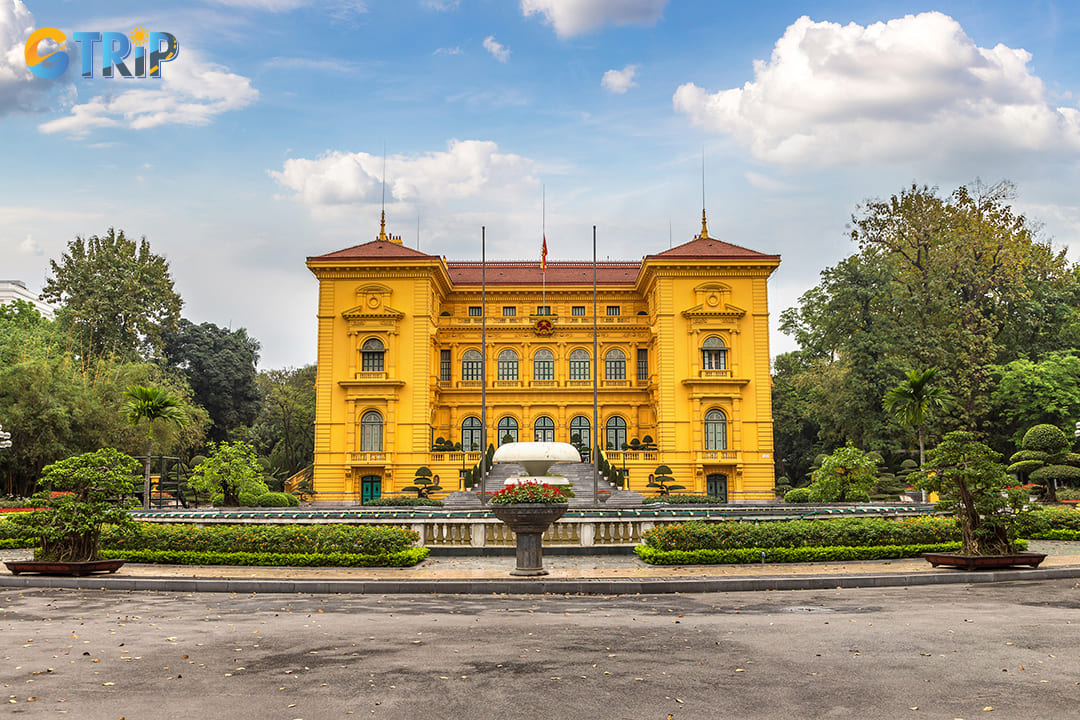
The majestic Presidential Palace stands as a striking example of French colonial architecture just steps away from Ho Chi Minh's modest stilt house
Ba Dinh Square
Ba Dinh Square holds profound historical significance as the location where President Ho Chi Minh read Vietnam's Declaration of Independence on September 2, 1945. This sprawling 320,000 square meter plaza serves as the ceremonial heart of Hanoi and sits directly in front of the Ho Chi Minh Mausoleum.
The square comes alive each morning during the flag-raising ceremony and transforms into a popular recreational space in the evenings when locals gather for exercise, socializing, and relaxation. The vast open space offers excellent photo opportunities of the surrounding government buildings and monuments.
Key features of Ba Dinh Square include:
- The central flagpole flying Vietnam's national flag
- Immaculately maintained lawns and gardens
- The ceremonial route to the Ho Chi Minh Mausoleum
- Historical markers commemorating the independence declaration
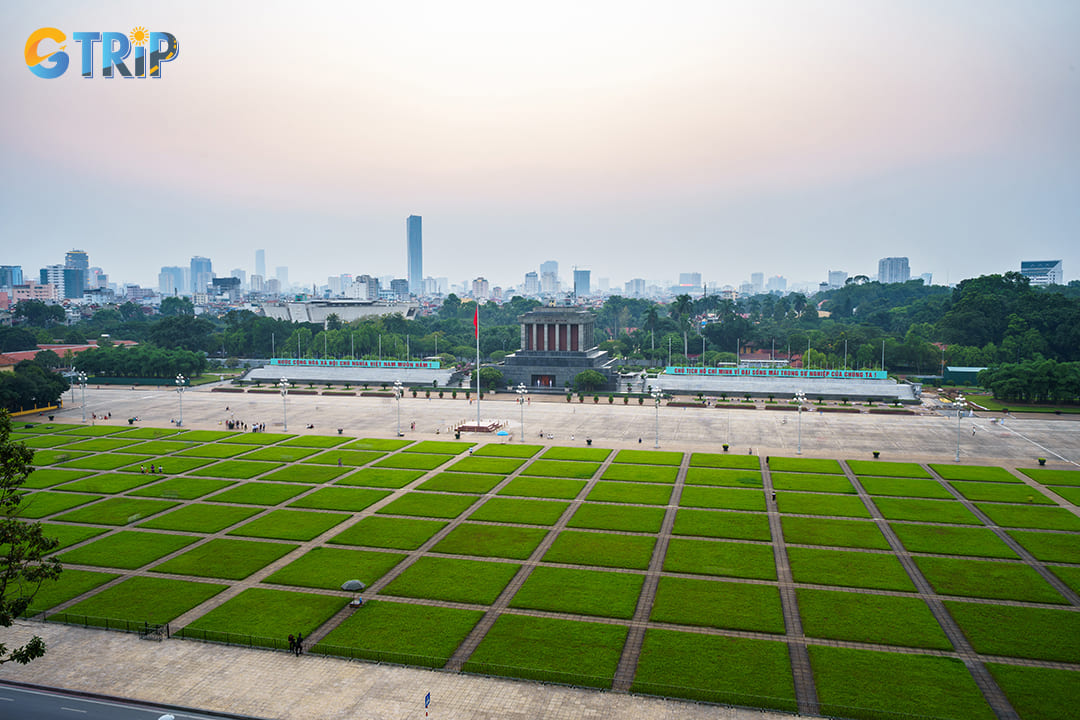
Ba Dinh Square holds profound historical significance as the location where President Ho Chi Minh read Vietnam's Declaration of Independence
One Pillar Pagoda
The One Pillar Pagoda represents one of Vietnam's most iconic Buddhist temples, situated just a short 3-minute walk from Ho Chi Minh's Stilt House. Built in 1049 during the Ly Dynasty, this unique structure resembles a lotus flower rising from the water, symbolizing the purity of Buddhism.
According to legend, Emperor Ly Thai Tong dreamed of meeting the Goddess of Mercy, who handed him a lotus flower while seated on a lotus throne. After consulting with Buddhist monks, he ordered the construction of this distinctive pagoda. Though rebuilt several times (most recently after being destroyed during the French withdrawal in 1954), it maintains its original design.
The architectural highlights include:
- A square wooden shrine atop a single stone pillar
- Intricate wooden carvings and Buddhist imagery
- A small altar inside is dedicated to the Goddess of Mercy
- Surrounding pond representing the lotus growing environment
Despite its small size, the One Pillar Pagoda attracts numerous tourists seeking blessings, particularly women praying for fertility and healthy children. The combination of historical significance, architectural uniqueness, and spiritual importance makes it an essential stop when exploring the attractions near Ho Chi Minh's Stilt House.

The One Pillar Pagoda represents one of Vietnam's most iconic Buddhist temples
Ho Chi Minh Museum
The Ho Chi Minh Museum presents a comprehensive exploration of the life, ideology, and legacy of Vietnam's revolutionary leader. Located just 250 meters from the stilt house, this modern museum opened in 1990 to commemorate Ho Chi Minh's 100th birthday and houses an extensive collection spanning multiple floors.
Unlike traditional biographical museums, the Ho Chi Minh Museum takes a thematic and artistic approach to storytelling. The exhibitions combine artifacts, documents, photos, and modern art to immerse tourists in Ho Chi Minh's life and Vietnam's fight for independence.
The museum is organized into several key sections:
- Ground floor: Introduction to Vietnamese history and Ho Chi Minh's early years
- Main exhibition halls: Thematic displays covering his revolutionary activities abroad
- Upper levels: Ho Chi Minh's leadership during independence and nation-building
- Special collections: Personal items, writings, and international recognition
English-speaking guides are available to provide context and stories that bring the exhibits to life. With approximately 20,000 artifacts and documents, people should allocate at least 1-2 hours to fully appreciate the museum's extensive collections and unique presentation style.

The Ho Chi Minh Museum presents a comprehensive exploration of the life, ideology, and legacy of Vietnam's revolutionary leader
FAQs about Ho Chi Minh's stilt house
Tourists to visit Ho Chi Minh's Stilt House often have practical questions before their trip to this historical site. This section addresses common inquiries about etiquette, accessibility, and regulations to help you plan a smooth and respectful visit to Uncle Ho's modest residence.
Are there any dress code requirements?
When visiting Ho Chi Minh's Stilt House, appropriate attire is required as a sign of respect for this historically significant site. The dress code isn't overly strict but follows Vietnamese cultural norms for visiting important national monuments. During summer months when temperatures in Hanoi can reach 95°F (35°C), lightweight clothing made of natural fabrics like cotton or linen is ideal while still maintaining modesty. Some people bring a light scarf or sarong that can be wrapped around their shoulders or legs if needed to meet requirements.
Is the stilt house wheelchair accessible?
Ho Chi Minh's Stilt House presents challenges for wheelchair users and those with mobility limitations, though some accommodations are available.
Visitors with mobility challenges should consider:
- Arriving early in the morning to avoid crowds
- Bringing a companion for assistance
- Contacting the management office in advance at +84-24-3845-5128 for special arrangements
- Using the main entrance, which has fewer steps than the secondary entrances
Staff members are generally helpful and will assist tourists with special needs when possible, though advance notification is recommended for the best experience.
Is photography allowed inside the stilt house?
Photography restrictions at Ho Chi Minh's Stilt House are quite specific and strictly enforced by the site's security personnel to preserve the historical artifacts and maintain a respectful atmosphere.
Photography policies:
- Photography is prohibited inside the stilt house itself
- Photos are permitted in the exterior gardens and grounds
- No flash photography is allowed anywhere on the premises
- Tripods and professional photography equipment require special permission
- Selfie sticks are discouraged in crowded areas
- Video recording follows the same restrictions as still photography
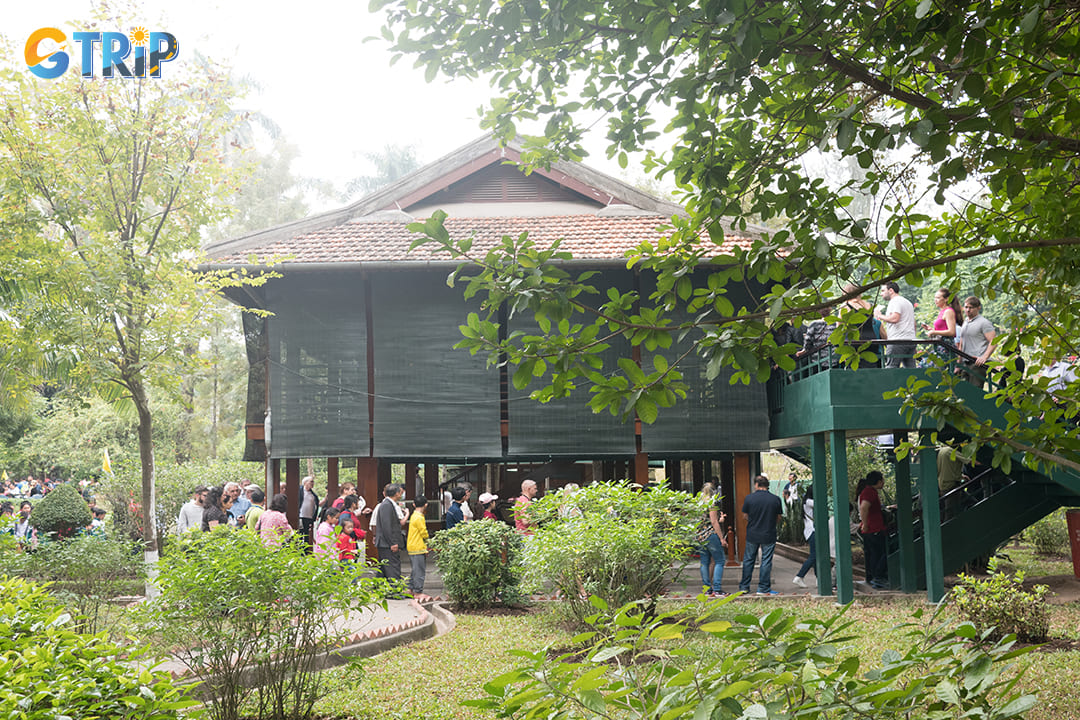
When visiting Ho Chi Minh's Stilt House, appropriate attire is required as a sign of respect for this historically significant site
Visiting the Ho Chi Minh stilt house is not just about exploring a piece of history, but an opportunity to connect with the values and simplicity that defined a remarkable leader's life. This attraction offers you a glimpse into the quiet resilience and humility that echo through Vietnam's journey. Let this inspire closer exploration into such unique experiences with GTrip - Vietnam Travel Agency. You can consider booking our Hanoi Tours to explore the Ho Chi Minh Stilt House and other attractions.

